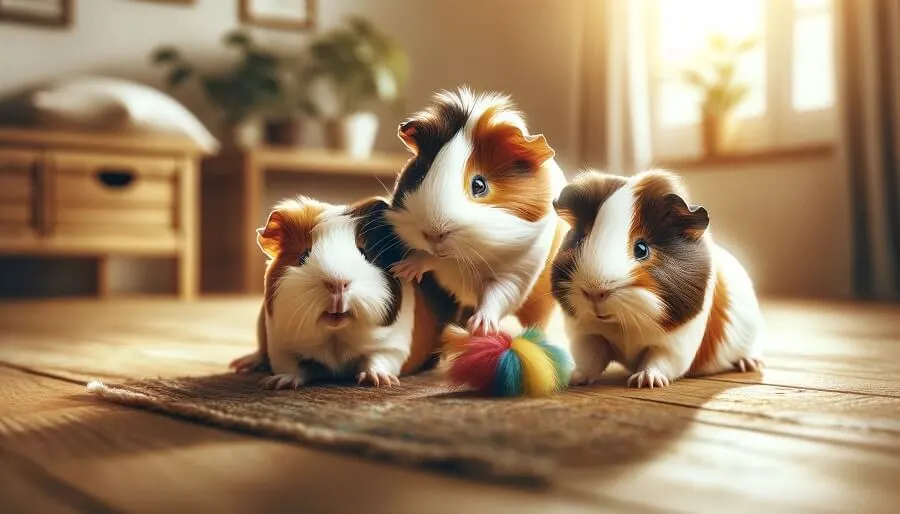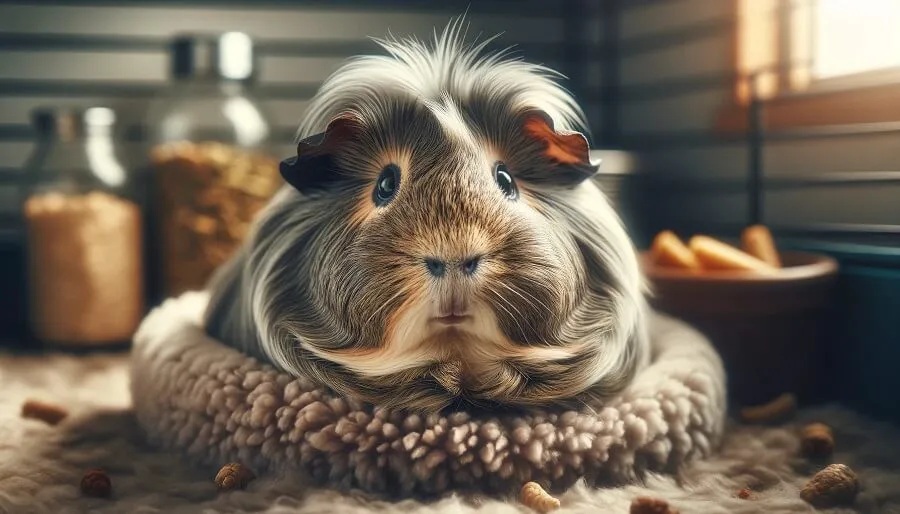Ever looked at your adorable guinea pig and wondered, “How old are you, little buddy?” Knowing your guinea pig’s age is more than just a fun fact; it’s key to providing the right care and attention. But unlike us, they don’t celebrate birthdays or carry IDs! So, how can we tell?
Don’t worry, we’ve got you covered. In this guide, we’ll dive into the fascinating ways you can estimate your guinea pig’s age, from their physical features to their behavior. Let’s embark on this exciting journey of discovery together!
How To Tell How Old Your Guinea Pig Is
Now, let’s talk about the tell-tale signs of age you can spot just by observing your guinea pig. It’s a bit like detective work, but way more fun!
Related Article: Guinea Pig Emergency Guide: Stroke vs. Heart Attack
Size and Weight Changes
From the moment they’re born, guinea pigs start their life journey with rapid growth. In the first few months, you’ll notice significant changes in both size and weight. Generally, a young guinea pig’s size can double within just 8 weeks! By tracking these changes, you can get a rough idea of their age. Remember, though, that individual growth can vary.
Teeth and Nail Development
The teeth and nails of guinea pigs are like nature’s timeline. Young guinea pigs have small, white, and sharp teeth. As they age, their teeth gradually become larger and yellower. Similarly, their nails start off thin and translucent. Over time, they become thicker and more opaque. By comparing these features to typical age-related changes, you can estimate your guinea pig’s age quite accurately.
Fur and Eye Changes
The quality of a guinea pig’s fur and eyes also gives away their age. A young guinea pig sports a soft, shiny coat, while an older one might have a coarser, less lustrous fur.
Similarly, young guinea pigs have bright, clear eyes. As they age, the eyes might become slightly duller and less vibrant. These changes are subtle but noticeable to a keen observer like you!
Behavioral Signs of Aging in Guinea Pigs
Understanding your guinea pig’s behavior can give you insights into their age. Let’s hop into what changes you might notice as your guinea pig grows older.
Activity Levels and Playfulness
Young guinea pigs are like little balls of energy, always ready to explore and play. They might zoom around their cage and perform adorable ‘popcorn’ jumps. As they mature into adults, their energy levels often mellow. They may still be curious but less inclined to spontaneous sprints and acrobatics. When your guinea pig prefers lounging to leaping, it’s a sign they’re growing up!
Social Behavior and Interaction
Guinea pigs are social creatures, and their social behavior evolves with age. Youngsters are typically more skittish and take time to adapt to handling. Adult guinea pigs, on the other hand, often become more comfortable and relaxed with human interaction. They might even enjoy chilling with you on the couch! If your guinea pig seems calmer and more laid-back as time goes by, it’s likely a sign of their maturing age.
Health Indicators and Life Stages

Now let’s navigate through the different life stages of a guinea pig. We will highlight the health indicators to watch out for at each stage. It’s like piecing together a puzzle of their life story!
Common Health Issues in Different Ages
As guinea pigs age, certain health issues may become more apparent. For instance, weight and muscle loss are common in senior guinea pigs. They may also show signs of stiffness or arthritis, affecting their mobility. Younger guinea pigs are generally healthier, but they’re not immune to health issues, so regular vet check-ups are crucial at every age.
Life Stage Classification
Understanding the life stages of guinea pigs can help you better estimate their age and provide appropriate care:
- Infancy (0-3 months): Rapid growth, high energy, and playful behavior.
- Adolescence (3-6 months): Continued growth, sexual maturity, and peak curiosity.
- Adulthood (6 months-5 years): Stable size, mature behavior, and a calmer demeanor.
- Senior Years (5+ years): Slower movements, potential health issues, and less energy.
Each stage has its unique characteristics and care requirements. Being aware of them ensures your guinea pig is happy and healthy at every age.
Related Article: Signs Your Guinea Pig Might Be Bored (And How To Fix It!)
Conclusion
Whether your guinea pig is a sprightly youngster or a serene senior, doesn’t matter. Each stage of their life brings its own joys and challenges. You’re not just a pet owner. By understanding how to tell their age and meeting their evolving needs, you’re a companion on their life’s journey. Cherish every moment with your guinea pig. Enjoy their playful leaps and their peaceful naps.

